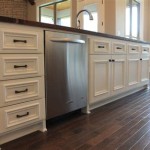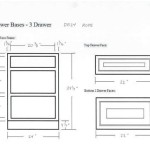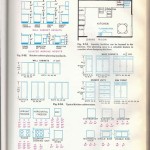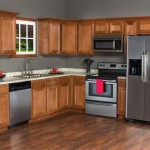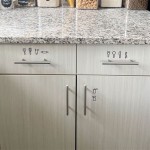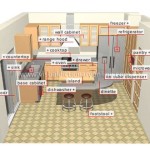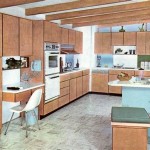Kitchen Cabinet Downlights: Illumination and Functionality Under the Hood
Kitchen cabinet downlights, also referred to as under-cabinet lighting, represent a strategic and effective lighting solution for enhancing visibility and aesthetics within the culinary space. These luminaires are typically installed beneath wall-mounted cabinets, directing focused light onto countertops and work surfaces. This targeted illumination significantly contributes to improved task performance during food preparation, cooking, and cleaning activities. Beyond practical benefits, strategically placed under-cabinet lighting can also accentuate design elements, create ambiance, and elevate the overall visual appeal of the kitchen environment.
The efficacy of kitchen cabinet downlights stems from their ability to eliminate shadows and provide consistent, even lighting where it is most needed. Overhead lighting, while necessary for general illumination, often casts shadows created by the upper cabinets, hindering visibility on the counters below. Under-cabinet lighting directly addresses this issue, ensuring that tasks are performed under optimal lighting conditions. This not only increases efficiency but also enhances safety by reducing the likelihood of accidents related to poor visibility, such as cuts or spills.
The selection and implementation of kitchen cabinet downlights involve a comprehensive consideration of various factors, including the type of lighting technology, color temperature, light output, installation method, and control options. Each of these aspects plays a crucial role in determining the overall performance and suitability of the lighting system for a specific kitchen setting.
Types of Kitchen Cabinet Downlights
The market offers a variety of under-cabinet lighting options, each with its unique characteristics, advantages, and disadvantages. The most common types include LED (Light Emitting Diode), halogen, and xenon lighting. Each technology differs in terms of energy efficiency, lifespan, color rendering, and heat generation. Understanding these differences is essential for making an informed decision based on individual needs and preferences.
LED lighting has emerged as the dominant choice for kitchen cabinet downlights due to its superior energy efficiency, long lifespan, and minimal heat output. LEDs consume significantly less power compared to halogen and xenon alternatives, resulting in lower energy bills and reduced environmental impact. Their extended lifespan, often exceeding 50,000 hours, minimizes the need for frequent replacements, further contributing to cost savings. Furthermore, LEDs produce very little heat, making them a safer option for installation near sensitive materials and preventing discomfort for users working beneath the cabinets.
Halogen lighting, while historically popular, is now less frequently used due to its higher energy consumption and shorter lifespan. Halogen bulbs produce a bright, white light with excellent color rendering, which accurately displays the colors of objects. However, they generate a substantial amount of heat and require more frequent replacements compared to LED options. This increased heat output can also pose a safety hazard if the lights are installed too close to flammable materials.
Xenon lighting falls somewhere between LED and halogen in terms of energy efficiency and lifespan. Xenon bulbs produce a crisp, white light that is similar to natural daylight. While they are more energy-efficient than halogen, they are less efficient than LED. Xenon bulbs also have a shorter lifespan than LEDs, requiring more frequent replacements. Their primary advantage over halogen is their lower heat output, making them a slightly safer option. However, due to the advancements and benefits of LEDs, xenon lights are becoming less common in kitchen lighting applications.
Key Considerations for Selecting Kitchen Cabinet Downlights
Choosing the right kitchen cabinet downlights requires careful consideration of several factors beyond just the type of lighting technology. These factors include color temperature, light output (measured in lumens), dimming capabilities, and the overall aesthetic appeal. A holistic approach to these aspects ensures that the selected lighting system not only provides adequate illumination but also complements the design and functionality of the kitchen.
Color temperature, measured in Kelvin (K), indicates the warmth or coolness of the light emitted. Lower Kelvin values (e.g., 2700K-3000K) produce a warm, yellowish light, while higher Kelvin values (e.g., 4000K-5000K) produce a cool, bluish-white light. For kitchen cabinet downlights, a color temperature of around 3000K-4000K is generally recommended. This range provides a balanced combination of warmth and brightness, creating a comfortable and inviting atmosphere while ensuring adequate visibility for task performance. However, personal preferences can influence this decision, and some individuals may prefer a slightly warmer or cooler light depending on the overall aesthetic of their kitchen.
Light output, measured in lumens, determines the brightness of the light emitted. The appropriate lumen output for kitchen cabinet downlights depends on the size of the work area, the color of the countertops, and the desired level of illumination. A general guideline is to aim for approximately 300-400 lumens per linear foot of countertop. However, darker countertops and larger kitchens may require higher lumen output to achieve optimal visibility. Conversely, lighter countertops and smaller kitchens may require less lumen output to avoid excessive brightness and glare.
Dimming capabilities offer greater control over the intensity of the light, allowing users to adjust the brightness to suit different tasks and create different moods. Dimmable kitchen cabinet downlights can be invaluable for creating a relaxed atmosphere during meals or for providing brighter light when performing tasks that require greater focus. Many LED under-cabinet lighting systems offer dimming functionality, which can be controlled via a wall-mounted dimmer switch or through smart home automation systems.
The aesthetic appearance of the under-cabinet lighting fixtures should also be considered to ensure that they complement the overall design of the kitchen. Fixtures are available in a variety of styles, finishes, and sizes, allowing homeowners to choose options that blend seamlessly with their cabinetry and decor. Sleek, minimalist designs are popular for modern kitchens, while more ornate fixtures may be suitable for traditional kitchens. The finish of the fixture should also be chosen carefully to match the hardware and other design elements in the kitchen, such as the faucet, cabinet pulls, and appliances.
Installation and Control Options for Kitchen Cabinet Downlights
The installation process and available control options significantly impact the convenience and functionality of kitchen cabinet downlights. Careful planning and proper installation are essential to ensure that the lights are positioned correctly, wired safely, and operate efficiently. Control options, such as switches, dimmers, and smart home automation, provide flexibility in managing the lighting and creating customized lighting schemes.
Installation methods for kitchen cabinet downlights vary depending on the type of fixture and the construction of the cabinets. Some fixtures are designed for surface mounting, while others are recessed into the cabinet frame. Surface-mounted fixtures are typically easier to install, requiring only screws or adhesive to attach them to the underside of the cabinet. Recessed fixtures, on the other hand, require cutting a hole in the cabinet frame to accommodate the fixture, which can be more challenging and may require professional installation. Regardless of the installation method, it is crucial to ensure that the wiring is properly connected and that all safety precautions are followed.
Wiring options also vary depending on the type of fixture and the electrical system in the kitchen. Some under-cabinet lights are hardwired directly into the electrical circuit, while others are powered by plug-in transformers. Hardwired fixtures provide a cleaner, more permanent installation, but they require more extensive electrical work. Plug-in fixtures are easier to install, but they may require running wires along the backsplash or countertop, which can be less aesthetically pleasing. It is important to consult with a qualified electrician to determine the best wiring option for a specific kitchen and to ensure that all electrical work is performed safely and in compliance with local building codes.
Control options for kitchen cabinet downlights include standard on/off switches, dimmer switches, and smart home automation systems. Standard on/off switches are the simplest and most affordable option, providing basic control over the lighting. Dimmer switches offer greater flexibility, allowing users to adjust the brightness of the lights to suit different tasks and moods. Smart home automation systems provide the most advanced control options, allowing users to control the lights remotely via a smartphone app or voice commands. These systems can also be integrated with other smart devices in the home, such as thermostats and security systems, to create a seamless and automated living environment.
Furthermore, some under-cabinet lighting systems offer features such as motion sensors, which automatically turn the lights on when someone approaches the work area, and occupancy sensors, which turn the lights off when the area is unoccupied. These features can help to conserve energy and extend the lifespan of the bulbs. The choice of control options depends on individual preferences, budget, and the desired level of automation.
By carefully considering these factors, homeowners and designers can select and implement kitchen cabinet downlights that enhance both the functionality and aesthetics of the space, creating a well-lit and inviting culinary environment.

Guide To Undercabinet Lighting

Everything You Need To Know About Under Cabinet Lighting Wren Kitchens

10 Kitchen Under Cabinet Lighting Ideas 2024 Ones Design Inside Cabinets

Lap Circo Round Led Disk Cabinet Downlight Chrome 0 45w 100lm 4 Pack Fix

5 Types Of Under Cabinet Lighting Pros Cons 1000bulbs Blog

Useful Kitchen Cupboard Lighting Ideas Light Supplier

Kitchen Lighting The Five Biggest Mistakes To Avoid

Led Under Cabinet Lighting Low Voltage Lights

A Step By Guide To Lighting Your Kitchen Modscape

25 Best Kitchen Lighting Ideas 2024 Moonbeam Lightingmoonbeam Blog
Related Posts

